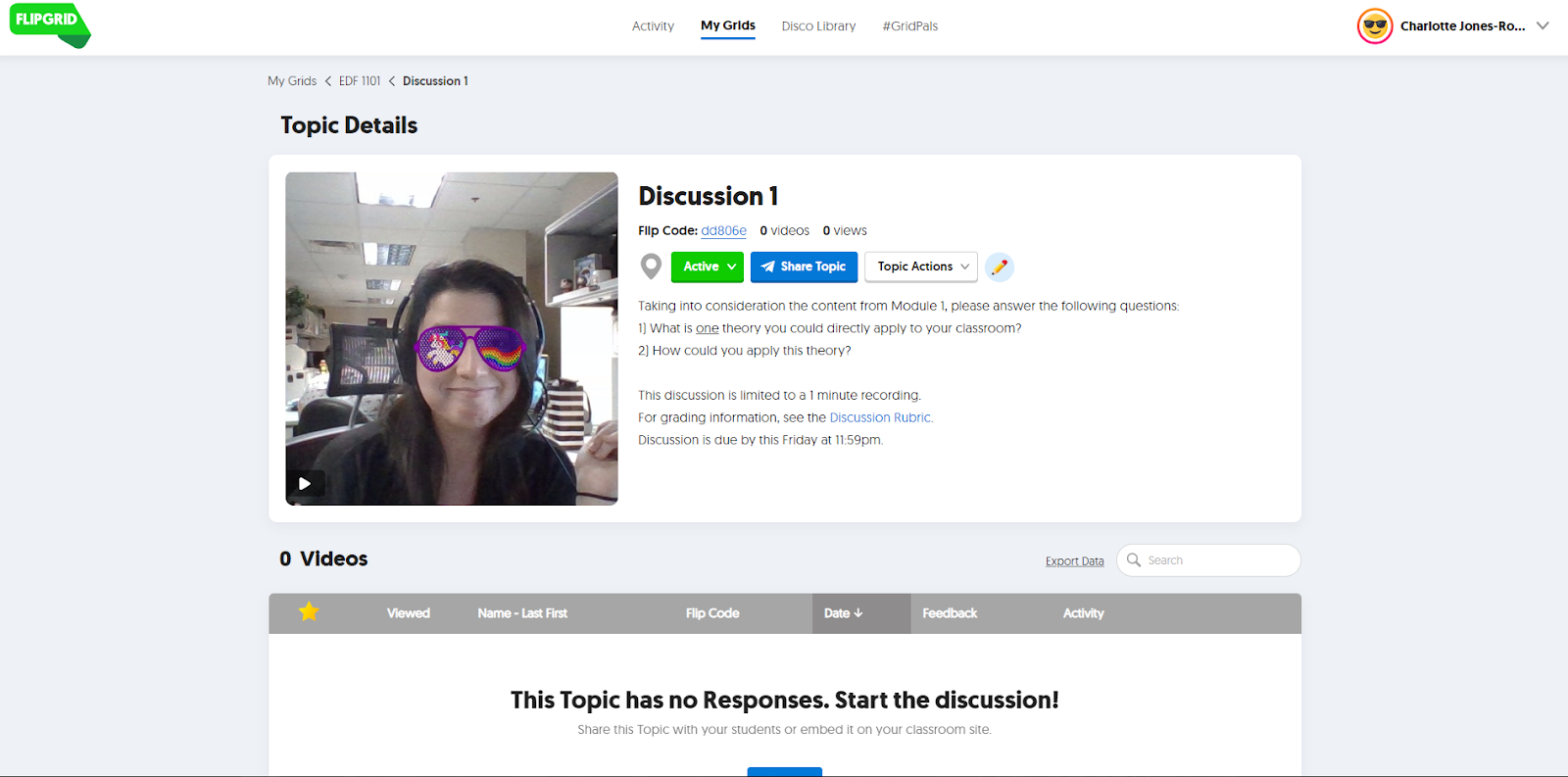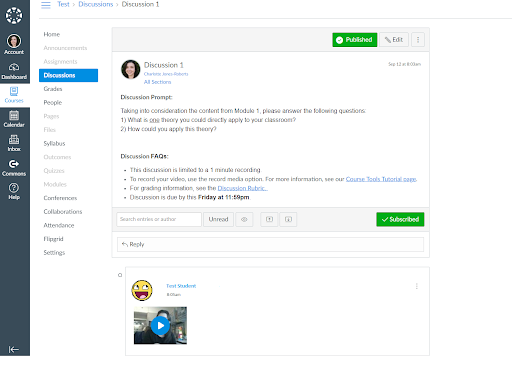Discussion boards in online courses are widely known to encourage higher-order thinking and reflection. However, text-based discussions may not be the best choice for all students or all learning outcomes. Student-created video is used increasingly in the form of video discussion boards. For example, instructors may have heard of Flipgrid, a popular video discussion software startup, gained prevalence when Microsoft acquired the company for use (Young, 2018).
The concept of this strategy is simple: an instructor poses a question and students record short asynchronous videos in order to respond to a discussion topic. They participate in discussion to facilitate higher order thinking, but also see and hear each other to increase engagement with the content and each other (Green & Green, 2016). This strategy is employable in most popular learning management systems such as Canvas or Blackboard or with a variety of other tools such as YouTube or Voicethread to accommodate use of video discussion in online courses.
Why should teachers use video versus text-based discussion? Video discussion has been shown to reduce students’ feelings of isolation and increase students’ social presence more than traditional text-based discussions (Clark, Strudler, & Grove, 2015). These discussions also create an opportunity for active learning through interactive video (Baker, 2016). Additionally, asynchronous video does not present the scheduling difficulties for busy students who cannot meet at scheduled times. It may also provide an opportunity where a professor ordinarily couldn’t evaluate students through text, such as a class with spoken language objectives.
Specific ideas for implementing asynchronous video discussion include:
- Evaluative discussion topic as a whole class or small groups (any discipline)
- Informal check-in for a group project (any discipline)
- Opportunity for students to practice objectives for a public speaking course
- Formative response for a foreign language course utilizing specific grammar or competencies (see examples below)
Link to example artifact(s)
For a specific example, look to a beginner level foreign language course (such as Spanish, French, or even English as a Second Language) formative video discussions are utilized as an opportunity for students to practice weekly target language. Classes are typically between 25-50 students in number. A module objective for one week covers asking questions in the simple past tense. A prompt reads:
“Ask three questions using the simple past tense in English. Record your video and submit by the deadline.”


Additional Resources:
- How to integrate Flipgrid with Canvas: http://static.flipgrid.com/docs/Canvas_Integration.pdf
- How to record video in Canvas: https://community.canvaslms.com/t5/Instructor-Guide/How-do-I-record-a-video-using-the-Rich-Content-Editor-as-an/ta-p/1198
- How to upload media in Blackboard discussions: https://bbhelp.cit.cornell.edu/student-use-of-video-in-blackboard/
- FlipGrid Tutorial: https://www.youtube.com/watch?v=-aZ523-HHBg
Link to scholarly reference(s)
Baker, A. (2016). Active Learning with interactive videos: Creating student-guided learning materials. Journal of Library & Information Services in Distance Learning, 10(3-4), 79-87.
Clark, C., Strudler, N., & Grove, K. (2015). Comparing asynchronous and synchronous video vs. text based discussions in an online teacher education course. Online Learning, 19(3), 48-69.
Green, T., & Green, J. (2018). Flipgrid: Adding voice and video to online discussions. TechTrends, 62(1), 128-130.
Young, J. (June 18, 2018). Edsurge News. Microsoft buys video-discussion platform flipgrid. Retrieved from: https://www.edsurge.com/news/2018-06-18-microsoft-buys-video-discussion-platform-flipgrid
Citation
Jones-Roberts, C. (2018). Using video discussion boards to increase student engagement. In B. Chen, A. deNoyelles, & A. Albrecht (Eds.), Teaching Online Pedagogical Repository. Orlando, FL: University of Central Florida Center for Distributed Learning. https://topr.online.ucf.edu/using-video-discussion-boards-to-increase-student-engagement/.